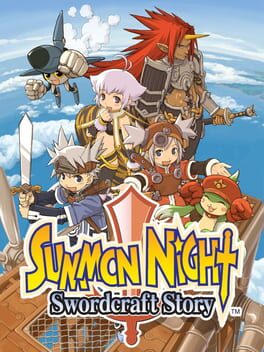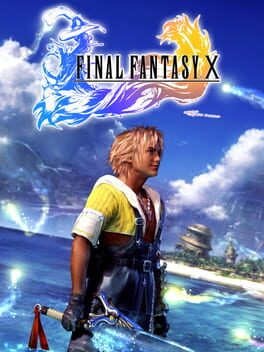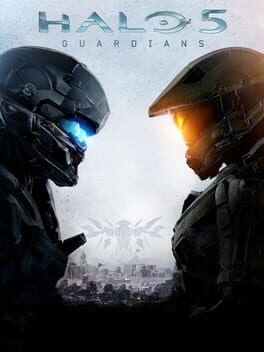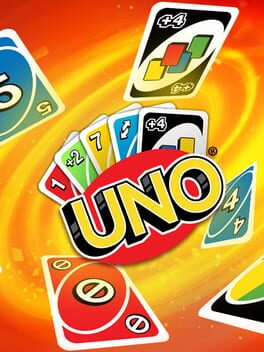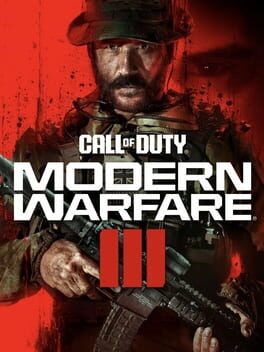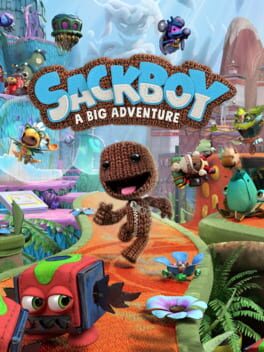Fizzsama
51 reviews liked by Fizzsama
As the second part of the three-game reimagining of Final Fantasy VII, Final Fantasy VII Rebirth is dealt with the carried expectations, risks, and ambitions that its predecessor, Remake, started with. And like Remake, I don’t believe I’m the person to be able to qualify how well it does or doesn’t do that - though I’d also argue that it might be impossible until the trilogy project is completed. It’s equally impossible to also not really start some discussion that this project isn’t simply just a reimagining in name, it’s just as much a tribute, a representation and reflection of the original game’s significance and influence, and very much a continuation of its greater compilation’s story. I tend to call this genre a “rebuild” - e.g. “Rebuild of Evangelion” - and it isn’t a popular one. Personally, I’m fascinated by it, not just due to it being very much an insight into how people - developers, players, history, etc. - see Final Fantasy VII, but because I think, whether or not you believe it succeeds, you have to at least respect the direction of something different in an industry where remake culture tends to be unimpressive high-definition renderings or lesser versions of a similar game. And I’m not saying this strictly as someone who is on board with the project’s direction, though I admit that since the end of Remake, I’ve given it time and, truth be told, my sentiments are of a positive curiosity. One lesson I do think is lost upon many is how Remake both exemplified and stated why it wasn’t necessarily possible to make a one-to-one ratio remake to capture the original game’s experience. This isn’t a statement to say that this series should be exempt from polarized criticism, merely that I think it’s something worth considering in the big picture sense. But I digress, I did like Remake as a game, though I did feel it had some hit or miss elements. I can safely say, after over one-hundred hours, that Rebirth is an incredibly notable improvement as a product even if it doesn’t eliminate all of those issues - but everything Remake succeeded in has been examined, enhanced, and thrives.
The greatest strength this series has thus far is recognizing the characters the best since the original title, as far as capturing and extending their roles. While liberties are taken, many of them seem to mostly extenuate intrigue to how this party should have depths of companionship whilst still reflecting core thematics as identity and the journey on an individual level. Between the tension of Cloud’s unstable mind, Aerith’s conflicted optimism, Barret’s worries about the future, and so on. Between banter and scenes, there has been evident care insofar as characterizations. Admittedly, I do believe the side cast can be hit-or-miss, particularly characters that are found from the extended compilation, though with the focus on the main crew and their journey, this isn’t necessarily an issue.
What makes talking about Rebirth’s storyline is that it’s still reenacting or building upon events of the source material, albeit it’s being done with the expectation that players are familiar with said events already. There’s the obvious dramas of asking how these things are done and, because I prefer to keep these writeups spoiler free, there’s not really an answer I can provide for how I do feel - for the lack of a better word here. What’s equally complicated is how I perceive the relationship between remakes and originals - that a ‘remake’ is either a reimagining with variations or it is an active improvement on the original’s system. It’s evident that they went with the former at this point, but that also makes it intricate for me to say what I fully think given I don’t have the full picture on the narrative changes. What I can say is that, again, in comparison to the original, there are inevitable hits and misses. I’ve already said my piece on the characters and how I adore the new content regarding them. I find the scene directives compelling or at the very least, I approach them with cautious optimism - which is my sentiment on the ending itself. I’ve mostly positive views on Rebirth, I just don’t believe I can fully explain why and be concise - and these writeups are long enough as is.
However, I’d be remiss if I didn’t admit that there’s two aspects that are definite misses for me: The first is the game’s pacing. While this isn’t Rebirth’s fault exclusively, given that the same issue was in Remake as well, it must be said that many story segments do overstay their welcome even if charming because they incorporate scripted walking segments and interactions. While I’ve seen far worse, it’s noticeable just how many chapters simply have time go by in long stretches. The secondary problem is some tonal dissonance. While this game captures its emotional beats effectively, there are moments where it doesn’t let you breathe and transitions to some emotional whiplash. This can be compounded with a loss of some important thematic subtleties from the original title.
To give one example, take the confrontation between Barret and Dyne. While the scenes and direction still work in their own way, it is inherently inferior because the juxtaposition between Corel Prison and the Gold Saucer has been lost in the setting of where the bout takes place and, even worse, because Shinra forces and Palmer interrupt at the end, transitioning into some slapstick comedy courtesy of the latter right after an emotional climax of one of the game’s prominent leads.
The story aspect aside, the real meat of Rebirth lies in its gameplay and content. The most obvious piece being the open world. I freely admit that I’m not genuinely into this kind of thing, but I can respect it when it engages me. The crux of how Rebirth adapts the world map is by categorizing areas into regions, often in the form of large field-esque design. I’d assert it’s a valid criticism to say that with how the maps work with set icons that it becomes more of a checklist than exploration - and that it can be tedious at a point - yet I think what makes it succeed partially is that the regions differentiate by having traversal options change. Some maps encourage puzzle solving to find set pathways - and rewards for finding them are encouraging. At the very least, this is the first game the series has had in a few years that captures what an ‘adventure’ feels like in regards to exploration. I definitely think it can be done better though. Part of the problem I believe is that it was a mistake to have worldbuilding done through Chadley, in part because it becomes a data exposition task instead of setting immersion because, even with the changes between environments, you are still activating the same towers, finding the same icons, etc. with small permutations. This isn’t a negative, it’s just something that could stand for some improvement, as the map layouts are still distinct. On a small scale, dungeons are well-made for their mob sections and occasional puzzle-solving, though nothing exceptional - and some, despite their quality, are an exercise in time.
In regards to content itself, there is an abundance here. Sidequests have inventory incentives for completion despite their fetch-quest attributes, though the character interactions make them more endearing. The protorelic substory in particular involves the eccentric series stape Gilgamesh and some of the title’s better minigames. As for minigames themselves, it is certifiably impressive how almost all of them are refined, though, like many things, I’d definitely say being forced to complete so many in the main story hurts the pacing. And even outside of that, it can be excessive just how much there is. Still, the systems implemented here in some of them, particularly Queen’s Blood - which they really want you to play - indicate the developers wanted these to be enjoyable.
However, what I would say is Rebirth’s greatest achievement mechanically is the combat system. Remake introduced a real-time action-based approach to the series’ ATB systems, giving players specific character combat to encourage proactivity for meter management whilst heavily encouraging team-based strategy by switching members and customizing them to handle various scenarios. Personally, I felt that these ideas worked though the two issues lied in how much wait time there was between ATB usage and how enemies often felt like static figurines. Suffice it to say, Rebirth not only addresses that, it also asks, “Why fix what isn’t broken?” and builds upon it.
The single best change is the incorporation of the synergy abilities, split between shortcut-based instant commands specific to the controlled party members or the special menu-based paired moves that can affect player options - such as giving temporarily unlimited MP. To simplify why these things are significant, if ATB meter was built through character actions, then there needed to be fixtures both offensively and defensively. Furthermore, while teamwork was prevalent in Remake, these abilities encourage it more than before as special synergy abilities can only be done when a set amount of player skills are used by both characters. Secondly, useful tech, such as shortcut synergy commands, will teleport characters across the field to another, allowing you to manipulate positional advantages, while building meter. There’s even unspoken benefits, such as switching to another character while guarding with another - and this will instantly teleport your new party member to the locked on enemy. If proactivity is rewarded, then adding more ways to do so is a good thing. Other specific combat improvements include implementing perfect guards, more active attack input bufferings, more accessible aerial options (which was missing in Remake), additional ATB abilities that expand movesets, and adding ranged moves for melee characters to use. And, even if you don’t wish to experiment with a full time, the game does offer enough options for you to stick to one character provided you understand the systems here,
To counterbalance so many changes, there’s been modifications to the enemy design, namely as far as managing their stagger meter. While said meters have become a commodity in the franchise the last decade, this trilogy has been on the stronger side of handling them for my money. The greatest reason why is influences players have on ‘pressuring’ enemies, creating a state where enemies can be vulnerable to hitstun or exposed to easier stagger. While many of Remake’s pressure states were made through basic elemental weaknesses or excessive damage, Rebirth adds new routes: from effective guards, to damaged body parts, to scripted patterns. Normal enemies in Remake often could feel like regular statues, though that doesn’t feel like the case with the re-tuning. Of course, this means enemies themselves also have new tricks, from playing with environmental attacks to being able to temporarily remove party members. Some enemies will even change attacks according to their aggro or successful hits. All of this applies even more to bosses because, like Remake, this is where the combat truly shines. Bosses truly bring out the strategical side of the game, having the teeth to punish players who want to treat this as another action RPG. Remake’s major encounters enforced the notion that playing like that isn’t how you maximize your success nor your enjoyment - and Rebirth enforces this more than ever. You’ll need to pay attention to enemy patterns, specific weaknesses, allocate according to the team lineup - and methodically reverse the intensity placed on you to take them out. Hard mode and the simulator challenges take this to the next level as crutches like items are taken away - your resources must be managed through your build to be ready for enemy encounters even in endurance-based sections. The fact that, even in weaker encounters, every fight offers so much variety in a relationship of lineups between party and mobs means this an impressive leap in enemy design for my money.
It’s a testament to how much this game has that I cannot talk the playable characters in much depth, so some general comments:
-Cloud’s counter-based offense remains as useful for an aggressive melee fighter, though Prime Mode and charged-based synergy skills add quicker routes for high damage without needing to stagger or use braver/infinity’s end. Buffs to Punisher Mode’s combo length and his long range attacks give answers he didn’t prior.
-Barrett’s status as the party tank is maintained, though his melee options expand through AoEs with smackdown or his long-ranged options get more buffs with Bonus Rounds.
-Tifa maintains her status as my favorite to play and remains mostly unchanged. Her melee options still deal with rushdowns to build stagger and quick meter for buff-based offensive combos. Her combo options and damage output through Unfettered Fury only expands her role as the speed-based melee fighter.
-Aerith’s ability to teleport between wards and craft barriers always made her an unbelievable support member, though her own offense was conducted through magic that was difficult to build meter for. Her new abilities make her arguably the strongest character in the game, as Radiant Ward turns her into a weapon of mass destruction (whilst making spells casted uninterrupted) and Transcendence, one of the most devastating tools in the game.
-Red XIII’s gameplay is a mix of support between managing his Vengeance Gauge’s unique specialties and elemental-based melee skills. Managing Red’s moveset, I found, was conducted upon recognizing how his defense and health operated accordingly. Reaper’s Touch, for instance, is a desperation skill only available at critical health, yet Nanaki’s Vengeance Gauge is handled around recovering vitality if need be.
-Yuffie is, frankly, cracked. She is easily the most versatile character of the entire game, having numerous recovery offensive options to escape getting stunlocked, active buffs and assists to keep freeflowing in battle, and easy access to magic without consuming meter. Between Aerith and her I really don’t know who is more powerful - in combination, they’re absurd.
-Cait Sith’s style is based around managing the Moogle’s quirky offense and Cait’s RNG-gambles. I admit I haven’t quite figured him out compared to the others, but being able to separate from the Moogle to create a decoy, actively increase teammate stats, or trade between long-and-short range abilities makes Cait Sith surprisingly more than just a luck-indicative character.
At risk of making this writeup any longer, I want to stop here. Final Fantasy VII Rebirth is an incredibly ambitious game, given some burden of legacy to navigate that, again, would require more time to discuss than I’m willing to give time here. There’s certainly inconsistencies in its final result, including a pacing issue across the entire board that makes me unsure how many non-RPG players it would be for. It’s for that reason that I think for others, it’s whatever you want to make of it. For me, I committed over one hundred hours to this title - and I simply don’t do that often. I can call this game an experience I won’t forget, conflicted feelings or not beyond what I expressed here - just the fact that I enjoyed my time and that it’s remained fresh in my mind means I will be back for the third part regardless.
The greatest strength this series has thus far is recognizing the characters the best since the original title, as far as capturing and extending their roles. While liberties are taken, many of them seem to mostly extenuate intrigue to how this party should have depths of companionship whilst still reflecting core thematics as identity and the journey on an individual level. Between the tension of Cloud’s unstable mind, Aerith’s conflicted optimism, Barret’s worries about the future, and so on. Between banter and scenes, there has been evident care insofar as characterizations. Admittedly, I do believe the side cast can be hit-or-miss, particularly characters that are found from the extended compilation, though with the focus on the main crew and their journey, this isn’t necessarily an issue.
What makes talking about Rebirth’s storyline is that it’s still reenacting or building upon events of the source material, albeit it’s being done with the expectation that players are familiar with said events already. There’s the obvious dramas of asking how these things are done and, because I prefer to keep these writeups spoiler free, there’s not really an answer I can provide for how I do feel - for the lack of a better word here. What’s equally complicated is how I perceive the relationship between remakes and originals - that a ‘remake’ is either a reimagining with variations or it is an active improvement on the original’s system. It’s evident that they went with the former at this point, but that also makes it intricate for me to say what I fully think given I don’t have the full picture on the narrative changes. What I can say is that, again, in comparison to the original, there are inevitable hits and misses. I’ve already said my piece on the characters and how I adore the new content regarding them. I find the scene directives compelling or at the very least, I approach them with cautious optimism - which is my sentiment on the ending itself. I’ve mostly positive views on Rebirth, I just don’t believe I can fully explain why and be concise - and these writeups are long enough as is.
However, I’d be remiss if I didn’t admit that there’s two aspects that are definite misses for me: The first is the game’s pacing. While this isn’t Rebirth’s fault exclusively, given that the same issue was in Remake as well, it must be said that many story segments do overstay their welcome even if charming because they incorporate scripted walking segments and interactions. While I’ve seen far worse, it’s noticeable just how many chapters simply have time go by in long stretches. The secondary problem is some tonal dissonance. While this game captures its emotional beats effectively, there are moments where it doesn’t let you breathe and transitions to some emotional whiplash. This can be compounded with a loss of some important thematic subtleties from the original title.
To give one example, take the confrontation between Barret and Dyne. While the scenes and direction still work in their own way, it is inherently inferior because the juxtaposition between Corel Prison and the Gold Saucer has been lost in the setting of where the bout takes place and, even worse, because Shinra forces and Palmer interrupt at the end, transitioning into some slapstick comedy courtesy of the latter right after an emotional climax of one of the game’s prominent leads.
The story aspect aside, the real meat of Rebirth lies in its gameplay and content. The most obvious piece being the open world. I freely admit that I’m not genuinely into this kind of thing, but I can respect it when it engages me. The crux of how Rebirth adapts the world map is by categorizing areas into regions, often in the form of large field-esque design. I’d assert it’s a valid criticism to say that with how the maps work with set icons that it becomes more of a checklist than exploration - and that it can be tedious at a point - yet I think what makes it succeed partially is that the regions differentiate by having traversal options change. Some maps encourage puzzle solving to find set pathways - and rewards for finding them are encouraging. At the very least, this is the first game the series has had in a few years that captures what an ‘adventure’ feels like in regards to exploration. I definitely think it can be done better though. Part of the problem I believe is that it was a mistake to have worldbuilding done through Chadley, in part because it becomes a data exposition task instead of setting immersion because, even with the changes between environments, you are still activating the same towers, finding the same icons, etc. with small permutations. This isn’t a negative, it’s just something that could stand for some improvement, as the map layouts are still distinct. On a small scale, dungeons are well-made for their mob sections and occasional puzzle-solving, though nothing exceptional - and some, despite their quality, are an exercise in time.
In regards to content itself, there is an abundance here. Sidequests have inventory incentives for completion despite their fetch-quest attributes, though the character interactions make them more endearing. The protorelic substory in particular involves the eccentric series stape Gilgamesh and some of the title’s better minigames. As for minigames themselves, it is certifiably impressive how almost all of them are refined, though, like many things, I’d definitely say being forced to complete so many in the main story hurts the pacing. And even outside of that, it can be excessive just how much there is. Still, the systems implemented here in some of them, particularly Queen’s Blood - which they really want you to play - indicate the developers wanted these to be enjoyable.
However, what I would say is Rebirth’s greatest achievement mechanically is the combat system. Remake introduced a real-time action-based approach to the series’ ATB systems, giving players specific character combat to encourage proactivity for meter management whilst heavily encouraging team-based strategy by switching members and customizing them to handle various scenarios. Personally, I felt that these ideas worked though the two issues lied in how much wait time there was between ATB usage and how enemies often felt like static figurines. Suffice it to say, Rebirth not only addresses that, it also asks, “Why fix what isn’t broken?” and builds upon it.
The single best change is the incorporation of the synergy abilities, split between shortcut-based instant commands specific to the controlled party members or the special menu-based paired moves that can affect player options - such as giving temporarily unlimited MP. To simplify why these things are significant, if ATB meter was built through character actions, then there needed to be fixtures both offensively and defensively. Furthermore, while teamwork was prevalent in Remake, these abilities encourage it more than before as special synergy abilities can only be done when a set amount of player skills are used by both characters. Secondly, useful tech, such as shortcut synergy commands, will teleport characters across the field to another, allowing you to manipulate positional advantages, while building meter. There’s even unspoken benefits, such as switching to another character while guarding with another - and this will instantly teleport your new party member to the locked on enemy. If proactivity is rewarded, then adding more ways to do so is a good thing. Other specific combat improvements include implementing perfect guards, more active attack input bufferings, more accessible aerial options (which was missing in Remake), additional ATB abilities that expand movesets, and adding ranged moves for melee characters to use. And, even if you don’t wish to experiment with a full time, the game does offer enough options for you to stick to one character provided you understand the systems here,
To counterbalance so many changes, there’s been modifications to the enemy design, namely as far as managing their stagger meter. While said meters have become a commodity in the franchise the last decade, this trilogy has been on the stronger side of handling them for my money. The greatest reason why is influences players have on ‘pressuring’ enemies, creating a state where enemies can be vulnerable to hitstun or exposed to easier stagger. While many of Remake’s pressure states were made through basic elemental weaknesses or excessive damage, Rebirth adds new routes: from effective guards, to damaged body parts, to scripted patterns. Normal enemies in Remake often could feel like regular statues, though that doesn’t feel like the case with the re-tuning. Of course, this means enemies themselves also have new tricks, from playing with environmental attacks to being able to temporarily remove party members. Some enemies will even change attacks according to their aggro or successful hits. All of this applies even more to bosses because, like Remake, this is where the combat truly shines. Bosses truly bring out the strategical side of the game, having the teeth to punish players who want to treat this as another action RPG. Remake’s major encounters enforced the notion that playing like that isn’t how you maximize your success nor your enjoyment - and Rebirth enforces this more than ever. You’ll need to pay attention to enemy patterns, specific weaknesses, allocate according to the team lineup - and methodically reverse the intensity placed on you to take them out. Hard mode and the simulator challenges take this to the next level as crutches like items are taken away - your resources must be managed through your build to be ready for enemy encounters even in endurance-based sections. The fact that, even in weaker encounters, every fight offers so much variety in a relationship of lineups between party and mobs means this an impressive leap in enemy design for my money.
It’s a testament to how much this game has that I cannot talk the playable characters in much depth, so some general comments:
-Cloud’s counter-based offense remains as useful for an aggressive melee fighter, though Prime Mode and charged-based synergy skills add quicker routes for high damage without needing to stagger or use braver/infinity’s end. Buffs to Punisher Mode’s combo length and his long range attacks give answers he didn’t prior.
-Barrett’s status as the party tank is maintained, though his melee options expand through AoEs with smackdown or his long-ranged options get more buffs with Bonus Rounds.
-Tifa maintains her status as my favorite to play and remains mostly unchanged. Her melee options still deal with rushdowns to build stagger and quick meter for buff-based offensive combos. Her combo options and damage output through Unfettered Fury only expands her role as the speed-based melee fighter.
-Aerith’s ability to teleport between wards and craft barriers always made her an unbelievable support member, though her own offense was conducted through magic that was difficult to build meter for. Her new abilities make her arguably the strongest character in the game, as Radiant Ward turns her into a weapon of mass destruction (whilst making spells casted uninterrupted) and Transcendence, one of the most devastating tools in the game.
-Red XIII’s gameplay is a mix of support between managing his Vengeance Gauge’s unique specialties and elemental-based melee skills. Managing Red’s moveset, I found, was conducted upon recognizing how his defense and health operated accordingly. Reaper’s Touch, for instance, is a desperation skill only available at critical health, yet Nanaki’s Vengeance Gauge is handled around recovering vitality if need be.
-Yuffie is, frankly, cracked. She is easily the most versatile character of the entire game, having numerous recovery offensive options to escape getting stunlocked, active buffs and assists to keep freeflowing in battle, and easy access to magic without consuming meter. Between Aerith and her I really don’t know who is more powerful - in combination, they’re absurd.
-Cait Sith’s style is based around managing the Moogle’s quirky offense and Cait’s RNG-gambles. I admit I haven’t quite figured him out compared to the others, but being able to separate from the Moogle to create a decoy, actively increase teammate stats, or trade between long-and-short range abilities makes Cait Sith surprisingly more than just a luck-indicative character.
At risk of making this writeup any longer, I want to stop here. Final Fantasy VII Rebirth is an incredibly ambitious game, given some burden of legacy to navigate that, again, would require more time to discuss than I’m willing to give time here. There’s certainly inconsistencies in its final result, including a pacing issue across the entire board that makes me unsure how many non-RPG players it would be for. It’s for that reason that I think for others, it’s whatever you want to make of it. For me, I committed over one hundred hours to this title - and I simply don’t do that often. I can call this game an experience I won’t forget, conflicted feelings or not beyond what I expressed here - just the fact that I enjoyed my time and that it’s remained fresh in my mind means I will be back for the third part regardless.
Final Fantasy X
2001
Halo 5: Guardians
2015
UNO
2017
Starfield
2023
(This is the 1,500th game I've logged on the site! BACKLOGGD FOR LIFE)
The PS5 showcase in the summer of 2020 sold both me and my wife on the system, and one featured game that interested us was Sackboy. Once it came out, reception was middling, so we held off on buying it. But when it hit PS Plus earlier this year, I ran out of excuses to keep putting it off.
The co-op seemed like the preferred way to play, so my daughter and I started making our way through... and she lost interest REAL quick. Now, she's beaten Mario 3D World multiple times, so the genre seemed like a good fit for us, but the whole thing just felt uninspired. The movement is boring, the level design is boring, the enemies, the collectibles, the music, etc. I've tried to keep playing by myself for a while, but while the game is clearly a competent platformer, there's not really anything going on here that stands out from its peers. This is the kind of game that could be fun with the right group or if you were a kid with like 3 games, but in my 30s with a shortage of free time, I can't justify sinking more hours into the gaming equivalent of an ambivalent shrug.
The PS5 showcase in the summer of 2020 sold both me and my wife on the system, and one featured game that interested us was Sackboy. Once it came out, reception was middling, so we held off on buying it. But when it hit PS Plus earlier this year, I ran out of excuses to keep putting it off.
The co-op seemed like the preferred way to play, so my daughter and I started making our way through... and she lost interest REAL quick. Now, she's beaten Mario 3D World multiple times, so the genre seemed like a good fit for us, but the whole thing just felt uninspired. The movement is boring, the level design is boring, the enemies, the collectibles, the music, etc. I've tried to keep playing by myself for a while, but while the game is clearly a competent platformer, there's not really anything going on here that stands out from its peers. This is the kind of game that could be fun with the right group or if you were a kid with like 3 games, but in my 30s with a shortage of free time, I can't justify sinking more hours into the gaming equivalent of an ambivalent shrug.

